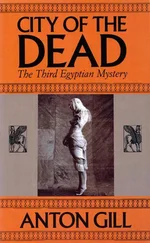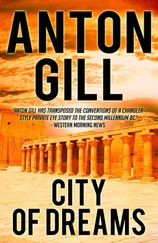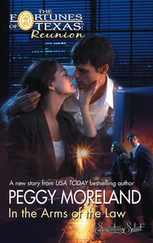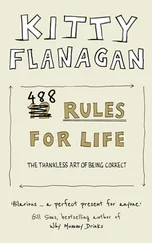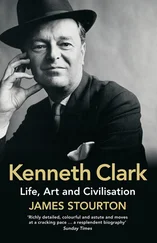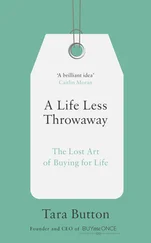PEGGY GUGGENHEIM
The Life of an Art Addict
ANTON GILL

To Marji Campi (who started all this)
with admiration, gratitude and love
London, New York, Paris, Venice; 1997–2001
Cover
Title Page PEGGY GUGGENHEIM The Life of an Art Addict ANTON GILL
Dedication To Marji Campi (who started all this) with admiration, gratitude and love London, New York, Paris, Venice; 1997–2001
Family Tree Family Tree
Foreword Foreword This book is made up of material derived from private and public archives and collections, published works, unpublished works, letters, diaries, interviews, gossip, e-mails, telephone conversations, videotapes, faxes, websites and so on. Despite the fact that the subject is recent, a number of discrepancies of spelling have cropped up in proper names. Where that has happened, I have used the version most commonly used by others. I have not tampered with usage, grammar or spelling in direct quotations from original material such as letters, though I have tidied up typographical errors – for many years Peggy Guggenheim used an ancient typewriter with a faded blue ribbon, and her typing was not accurate. I have left eccentricities of spelling alone (Peggy habitually spelt ‘thought’ ‘thot’, and ‘bought’ ‘bot’), and have provided an explanation only if the level of obscurity seemed great enough to warrant one. Round brackets in quoted passages belong to the passage; glosses within such passages are in square brackets. Titles of artworks in Peggy’s collection are generally the same as those used by Angelica Z. Rudenstine in her catalogue of the Peggy Guggenheim Collection. Other paintings and sculptures are given the names they’re most commonly known by. I’d like to express my thanks here at the outset to all who helped. A lot of people had a profound personal contact with Peggy, and shared their memories of her with me generously. I am most grateful to them – their names are in the acknowledgements at the end of the book. I have had to be selective in the use of some tangential detail for reasons of both focus and of space. Readers interested in further exploration of the background to this book are referred to the bibliography. Inevitably what I have written will lead to a certain amount of disagreement. Some of the material conflicted, and some was clogged with gossip and rumour. I can only say that to the best of my ability I have checked all the matter I have used for correctness, and that I have tried to keep speculation to a minimum. I thank Marji Campi, Barbara Shukman and Karole Vail for looking over the manuscript, but I alone am accountable for any errors. I have not, however, consciously sought to mislead or offend anyone in this record of the life of a complex, anarchic, remarkable woman. Anton Gill London, 2001
Prelude
Part 1: Youth
1: Shipwreck
2: Heiress
3: Guggenheims and Seligmans
4: Growing Up
5: Harold and Lucile
6: Departure
Part 2: Europe
7: Paris
8: Laurence, Motherhood and ‘Bohemia’
9: Pramousquier
10: Love and Literature
11: Hayford
12: Love and Death
13: An English Country Garden
14: Turning Point
15: ‘Guggenheim Jeune’
16: Paris Again
Intermezzo: Max and Another Departure: Marseilles and Lisbon
Part 3: Back in the USA
17: Coming Home
18: Art of This Century
19: Memoir
Part 4: Venice
20: Transition
21: Palazzo
22: Legacy
23: ‘The last red leaf is whirl’d away …’
Coda
Acknowledgements
Source Notes
Bibliography
Index
About the Author
Praise
By the Same Author
Copyright
About the Publisher
This book is made up of material derived from private and public archives and collections, published works, unpublished works, letters, diaries, interviews, gossip, e-mails, telephone conversations, videotapes, faxes, websites and so on. Despite the fact that the subject is recent, a number of discrepancies of spelling have cropped up in proper names. Where that has happened, I have used the version most commonly used by others.
I have not tampered with usage, grammar or spelling in direct quotations from original material such as letters, though I have tidied up typographical errors – for many years Peggy Guggenheim used an ancient typewriter with a faded blue ribbon, and her typing was not accurate. I have left eccentricities of spelling alone (Peggy habitually spelt ‘thought’ ‘thot’, and ‘bought’ ‘bot’), and have provided an explanation only if the level of obscurity seemed great enough to warrant one. Round brackets in quoted passages belong to the passage; glosses within such passages are in square brackets.
Titles of artworks in Peggy’s collection are generally the same as those used by Angelica Z. Rudenstine in her catalogue of the Peggy Guggenheim Collection. Other paintings and sculptures are given the names they’re most commonly known by.
I’d like to express my thanks here at the outset to all who helped. A lot of people had a profound personal contact with Peggy, and shared their memories of her with me generously. I am most grateful to them – their names are in the acknowledgements at the end of the book. I have had to be selective in the use of some tangential detail for reasons of both focus and of space. Readers interested in further exploration of the background to this book are referred to the bibliography. Inevitably what I have written will lead to a certain amount of disagreement. Some of the material conflicted, and some was clogged with gossip and rumour. I can only say that to the best of my ability I have checked all the matter I have used for correctness, and that I have tried to keep speculation to a minimum. I thank Marji Campi, Barbara Shukman and Karole Vail for looking over the manuscript, but I alone am accountable for any errors. I have not, however, consciously sought to mislead or offend anyone in this record of the life of a complex, anarchic, remarkable woman.
Anton Gill
London, 2001
‘Her obduracy in contention and her warmth in friendship, her generosity and her stinginess, her plunges into gloom and wholehearted abandonment to laughter, her puritan streak and her reckless addiction to the erotic were all contradictions of the essence of her personality.’
MAURICE CARDIFF, Friends Abroad
The rain, which had not stopped for a week, ceased in the late afternoon of 29 September 1998, so that by the evening the flagstones in the garden were dry. The heat and the humidity relented too, so that as the crowd gathered the atmosphere and the temperature were perfect.
The garden was that of the Palazzo Venier dei Leoni, an eighteenth-century pile in Dorsoduro, on the Accademia bank of the Grand Canal in Venice, between the Accademia Bridge and Santa Maria della Salute, close to where the Canal Grande debouches into the Canale di San Marco. The palazzo is exotic. It was never finished. It only has a sub-basement and one storey, with a flat roof that doubles as a terrace; but the garden is one of the largest in Venice. The trees are huge. When Peggy Guggenheim owned and lived in the palace, the garden was muddy and overgrown, and the sculptures planted in it – the bronze trolls of Max Ernst, the minimalist, organic forms of Arp and Brancusi – inhabited it as mysterious beings might lurk in a wood, waiting for the traveller to come upon them unaware.
Читать дальше


